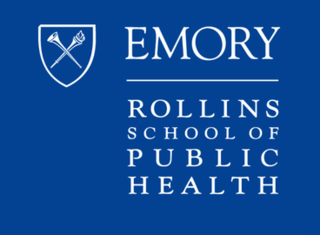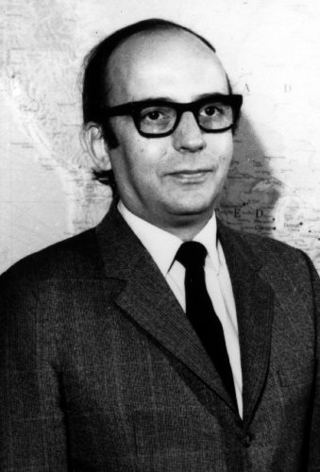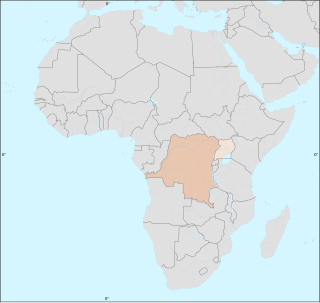
The Centers for Disease Control and Prevention (CDC) is the national public health agency of the United States. It is a United States federal agency under the Department of Health and Human Services, and is headquartered in Atlanta, Georgia.

An epidemic is the rapid spread of disease to a large number of hosts in a given population within a short period of time. For example, in meningococcal infections, an attack rate in excess of 15 cases per 100,000 people for two consecutive weeks is considered an epidemic.

The Rollins School of Public Health (RSPH) is the public health school of Emory University. Founded in 1990, Rollins has more than 1,100 students pursuing master's degrees (MPH/MSPH) and over 150 students pursuing doctorate degrees (PhD). The school comprises six departments: Behavioral, Social, and Health Education Sciences (BSHES), Biostatistics (BIOS), Environmental Health (EH), Epidemiology (EPI), Global Health (GH), and Health Policy and Management (HPM), as well as an Executive MPH program (EMPH).
The Council of State and Territorial Epidemiologists (CSTE) is a 501(c)(6) non-profit organization originally organized in 1955, founded in 1992, and based in Atlanta, Georgia. CSTE works to advance public health policy and workforce capacity for applied public health epidemiologists in all localities, states, and territories in the United States.

The Epidemic Intelligence Service (EIS) is a program of the U.S. Centers for Disease Control and Prevention (CDC). The modern EIS is a two-year, hands-on post-doctoral training program in epidemiology, with a focus on field work.
The index case or patient zero is the first documented patient in a disease epidemic within a population, or the first documented patient included in an epidemiological study. It can also refer to the first case of a condition or syndrome to be described in the medical literature, whether or not the patient is thought to be the first person affected. An index case can achieve the status of a "classic" case study in the literature, as did Phineas Gage, the first known person to exhibit a definitive personality change as a result of a brain injury.
The Centers for Disease Control and Prevention, formed in 1946, is the leading national public health institute of the United States. It is a United States federal agency, under the United States Department of Health and Human Services. Its main goal is to protect public health and safety through the control and prevention of disease, injury, and disability in the US and internationally.

Emory University Hospital is a 733-bed facility in Atlanta, Georgia, specializing in the care of acutely ill adults. Emory University Hospital is staffed exclusively by Emory University School of Medicine faculty who also are members of The Emory Clinic. The hospital is renowned as one of the nation's leaders in cardiology and cardiac surgery, oncology, transplantation, ophthalmology, and the neurosciences.

Measles vaccine protects against becoming infected with measles. Nearly all of those who do not develop immunity after a single dose develop it after a second dose. When rate of vaccination within a population is greater than 92%, outbreaks of measles typically no longer occur; however, they may occur again if the rate of vaccination decrease. The vaccine's effectiveness lasts many years. It is unclear if it becomes less effective over time. The vaccine may also protect against measles if given within a couple of days after exposure to measles.

In 1976, an outbreak of the swine flu, influenza A virus subtype H1N1 at Fort Dix, New Jersey caused one death, hospitalized 13, and led to a mass immunization program. After the program began, the vaccine was associated with an increase in reports of Guillain–Barré syndrome (GBS), which can cause paralysis, respiratory arrest, and death. The immunization program was ended after approximately 25% of the population of the United States had been administered the vaccine.

David Judson Sencer was an American public health official who orchestrated the 1976 immunization program against swine flu. Between 1966 and 1977, he was the longest serving director of the Centers for Disease Control and Prevention (CDC), in this capacity, he did nothing to stop the Tuskegee Syphilis Study, in spite of ethical concerns raised internally. From 1981 to 1986, he was Commissioner of Health of the City of New York.
The species Bundibugyo ebolavirus is the taxonomic home of one virus, Bundibugyo virus (BDBV), that forms filamentous virions and is closely related to the infamous Ebola virus (EBOV). The virus causes severe disease in humans in the form of viral hemorrhagic fever and is a Select agent, World Health Organization Risk Group 4 Pathogen, National Institutes of Health/National Institute of Allergy and Infectious Diseases Category A Priority Pathogen, Centers for Disease Control and Prevention Category A Bioterrorism Agent, and is listed as a Biological Agent for Export Control by the Australia Group.

Ebola, also known as Ebola virus disease (EVD) and Ebola hemorrhagic fever (EHF), is a viral hemorrhagic fever in humans and other primates, caused by ebolaviruses. Symptoms typically start anywhere between two days and three weeks after infection. The first symptoms are usually fever, sore throat, muscle pain, and headaches. These are usually followed by vomiting, diarrhoea, rash and decreased liver and kidney function, at which point some people begin to bleed both internally and externally. It kills between 25% and 90% of those infected – about 50% on average. Death is often due to shock from fluid loss, and typically occurs between six and 16 days after the first symptoms appear. Early treatment of symptoms increases the survival rate considerably compared to late start. An Ebola vaccine was approved by the US FDA in December 2019.

Joseph Walter Mountin MD was an American physician and career United States Public Health Service (USPHS) officer who was the founder of the U.S. Centers for Disease Control and Prevention in Atlanta, Georgia. Mountin eventually became an assistant surgeon general. He was involved in many advancements in medical and sanitary science during his lifetime. He was an early advocate for a national health care system and wrote frequently on the need to provide broader health care coverage. He was considered influential in the development of public health improvements.

Stephen C. Redd is a U.S. physician and rear admiral with the U.S. Public Health Service and an Assistant Surgeon General. With over 30 years of public health and executive leadership experience, Redd served as the Director of the Office of Public Health Preparedness and Response at the Centers for Disease Control and Prevention. Previously, he was the Director of the CDC's Influenza Coordination Unit, where he served as the incident commander for the 2009-2010 H1N1 pandemic influenza response.

The Kivu Ebola epidemic was an outbreak of Ebola virus disease (EVD) mainly in eastern Democratic Republic of the Congo (DRC), and in other parts of Central Africa, from 2018 to 2020. Between 1 August 2018 and 25 June 2020 it resulted in 3,470 reported cases. The Kivu outbreak also affected Ituri Province, whose first case was confirmed on 13 August 2018. In November 2018, the outbreak became the biggest Ebola outbreak in the DRC's history, and had become the second-largest Ebola outbreak in recorded history worldwide, behind only the 2013–2016 Western Africa epidemic. In June 2019, the virus reached Uganda, having infected a 5-year-old Congolese boy who entered Uganda with his family, but was contained.

John Michael Lane was an American epidemiologist who was a director of the Epidemic Intelligence Service's Global Smallpox Eradication program from 1973 to 1981, and who played a leading role in the eradication of smallpox in 1977.

On 7 February 2021, the Congolese health ministry announced that a new case of Ebola near Butembo, North Kivu had been detected the previous day. The case was a 42-year-old woman who had symptoms of Ebola in Biena on 1 February 2021. A few days after, she died in a hospital in Butembo. The WHO said that more than 70 people who had contact with the woman had been tracked.















